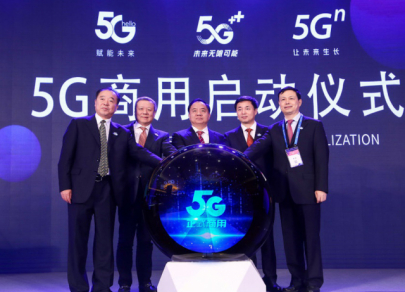FX.co ★ Countries set to become world’s largest 5G regions by 2025
Countries set to become world’s largest 5G regions by 2025
China
The rapid rollout of 5G networks in China is not a surprise to anyone. The country has achieved notable progress in this field despite the woes caused by the COVID-19 pandemic.
According to GSMA Intelligence experts, by 2025, the number of 5G connections in the country will come in at 600 million, which will make China the undisputed leader in the commercial use of this new technology.
The Ministry of Industry and Information Technology of the People’s Republic of China notes that since the beginning of the epidemic, the country has registered more active and widespread use of 5G in such areas as medical care, education, and remote work.

South Korea
In South Korea, 66% of mobile connections will be 5G by mid-decade. More than 34,000 5G base stations have already been deployed (mainly in Seoul and other megacities of the country). A number of telecommunications companies such as SK Telecom, KT, and LG Uplus have been involved in the construction of the 5G network.
The government supports and coordinates the development of the 5th generation network. It also focuses its attention on the industry of unmanned vehicles and digital health. Recently, the South Korean authorities have pledged to reduce taxes by 3% on the construction of 5G infrastructure. The President of South Korea said that the country would create 600,000 jobs and a 5G-based export industry worth $73 billion by 2026.

US
GSMA Intelligence experts suppose that by 2025, the 5G network coverage in the US will reach 50%.
Since February 2020, Dell Technologies, Microsoft, and AT&T have been developing software for next-generation 5G telecommunications networks in order to reduce reliance on China’s Huawei. Besides, China’s tech giant has faced increasing scrutiny from US officials who previously accused the company of espionage for the Chinese government.
Overall, At&T managed to achieve the interim results by rolling out a nationwide network. The company has already expanded the 5G network to cover over 50 million people in 32 cities. Nevertheless, the company uses mainly the low-frequency 850-MHz band, which provides longer-range reception but lower speed.

Japan
By the middle of the decade, the 5G mobile network in Japan will amount to 49%.
Japan, which has also joined the race for the 5G dominance, has recently made a sensational statement: it has launched the development of the 6G mobile network in an effort to prevent Chinese technological supremacy.
Nowadays, 5G is the most advanced network with a maximum speed of 35 Gbit/s, while the 6G networks transfer data at a mind-boggling speed of 100 Gbit/s-1 Tbit/s.

Russia
In Russia, even the development of 4G technology lags far behind the one in foreign countries. Therefore, 5G networks are unlikely to be adapted in Russia for a long time. The implementation of radio access networks, transport and support networks in the country is still undergoing. 4G network coverage in Russia can be seen only in major cities, and a shift to 5G networks may occur only in 2024.
The Skolkovo Institute of Science and Technology is carrying out research in the field of the next generation 5G mobile networks. In mid-2019, the institute launched the first 5G base station within the framework of a pilot zone for Russian equipment developers. Yet, Russia lacks domestic equipment to expand the 5G network. Therefore, the country is unlikely to switch to this technology as fast as other more developed countries.






















